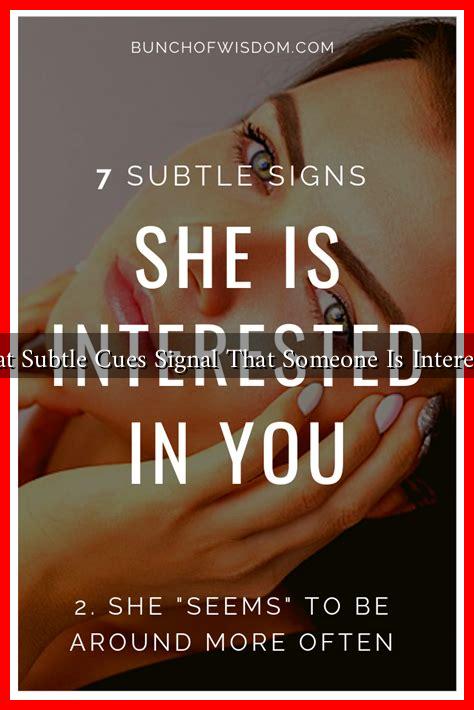-
Table of Contents
What Subtle Cues Signal That Someone Is Interested
Understanding the nuances of human interaction can be a complex endeavor, especially when it comes to deciphering interest. Whether in a romantic context, a professional setting, or casual social interactions, recognizing subtle cues can significantly enhance communication and relationships. This article explores the various signals that indicate someone is interested in you, backed by research and real-world examples.
The Importance of Nonverbal Communication
Nonverbal communication plays a crucial role in how we express interest. According to a study published in the journal *Psychological Science*, nonverbal cues can convey more information than verbal communication. This means that paying attention to body language, facial expressions, and other subtle signals can provide valuable insights into someone’s feelings.
Key Subtle Cues of Interest
Here are some of the most common subtle cues that indicate someone is interested:
- Eye Contact: Prolonged eye contact can signal attraction and interest. A study from the University of California found that mutual gaze can increase feelings of intimacy.
- Body Orientation: When someone turns their body towards you, it indicates engagement. This open posture suggests they are interested in what you have to say.
- Mirroring: People often subconsciously mimic the body language of those they are interested in. If you notice someone adopting similar gestures or postures, it’s a positive sign.
- Smiling: A genuine smile, particularly one that reaches the eyes, can indicate warmth and interest. According to a study by the University of Kansas, smiling can enhance perceptions of attractiveness.
- Touch: Light, casual touches on the arm or shoulder can signal interest. However, context is crucial, as personal boundaries vary widely.
Context Matters: Situational Cues
Understanding the context in which these cues occur is essential. For instance, in a professional setting, someone may exhibit interest through attentive listening and asking follow-up questions. In contrast, in a social or romantic context, the cues may be more overt, such as flirtation or playful teasing.
Consider the following scenarios:
- Networking Events: At a networking event, if someone maintains eye contact and leans in while you speak, they are likely interested in your conversation.
- First Dates: On a date, if your partner mirrors your movements and engages in light physical contact, these are strong indicators of interest.
- Group Settings: In a group, if someone consistently seeks you out for conversation or laughs at your jokes, it may suggest they are drawn to you.
Case Studies and Research Findings
Research has shown that subtle cues can significantly impact interpersonal relationships. A study conducted by the University of Chicago found that individuals who are more attuned to nonverbal signals tend to have better social skills and form stronger connections. This highlights the importance of being aware of both your own body language and that of others.
Moreover, a survey by the dating app Hinge revealed that 70% of users believe that body language is a crucial factor in determining romantic interest. This statistic underscores the significance of nonverbal communication in dating scenarios.
Conclusion: The Art of Reading Interest
Recognizing subtle cues that signal interest can enhance your social interactions and relationships. By paying attention to nonverbal communication, you can better understand the feelings of those around you. Remember that context is key; the same cue can have different meanings depending on the situation. Whether you are navigating a romantic relationship or a professional environment, being attuned to these signals can lead to more meaningful connections.
In summary, the ability to read subtle cues of interest is an invaluable skill. By observing eye contact, body orientation, mirroring, smiling, and touch, you can gain insights into others’ feelings. As you practice this skill, you may find that your interactions become more engaging and fulfilling.
For further reading on nonverbal communication, consider exploring resources from the American Psychological Association.

